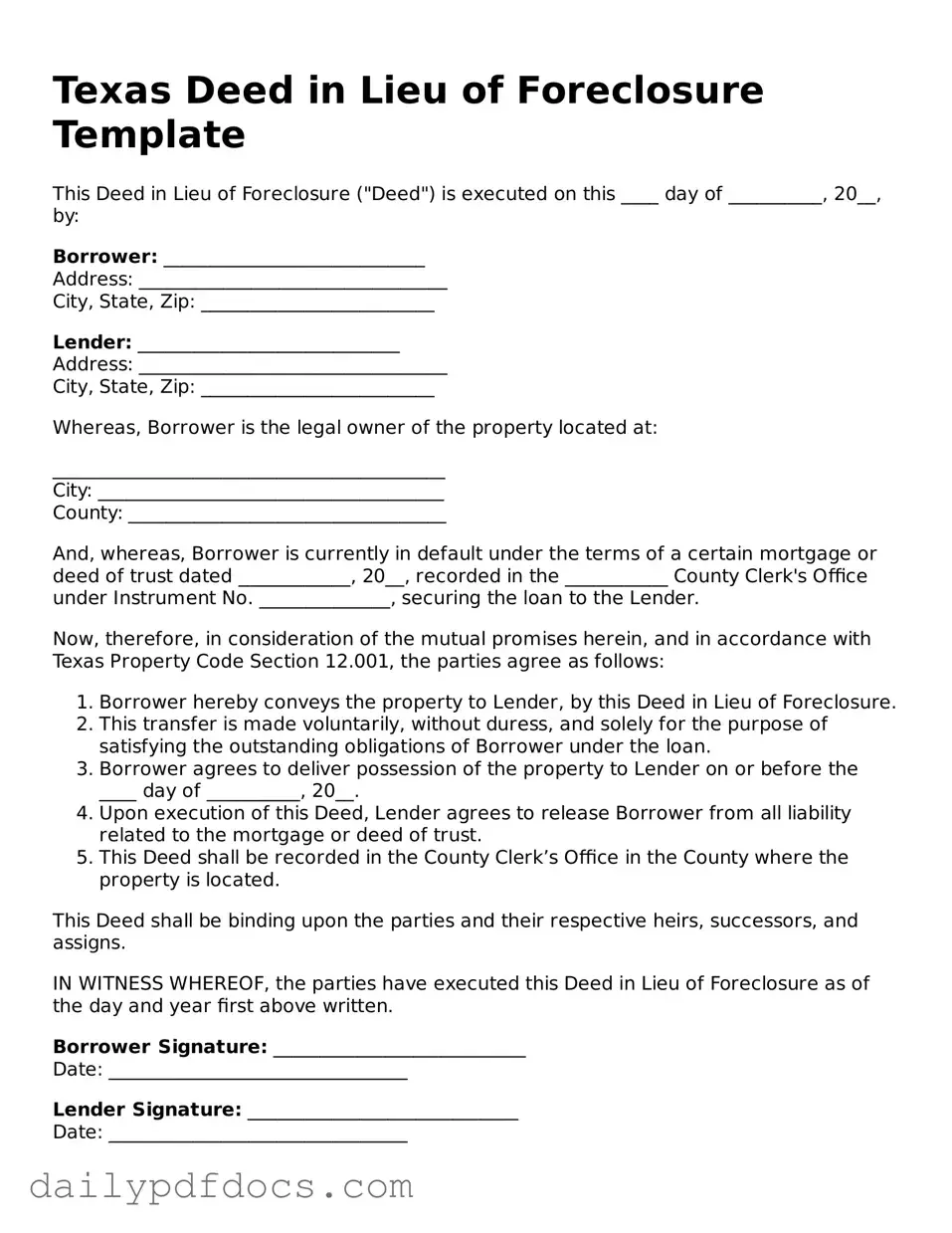What is a Deed in Lieu of Foreclosure?
A Deed in Lieu of Foreclosure is a legal document where a homeowner voluntarily transfers their property to the lender to avoid foreclosure. This option is often considered when the homeowner is unable to keep up with mortgage payments and wishes to resolve the situation without going through the lengthy foreclosure process.
Who can use a Deed in Lieu of Foreclosure?
Homeowners who are facing financial difficulties and are at risk of foreclosure may consider this option. It is important that the property is not subject to any additional liens or encumbrances that would complicate the transfer. Additionally, lenders typically require that the homeowner demonstrates a genuine inability to continue making mortgage payments.
What are the benefits of a Deed in Lieu of Foreclosure?
One of the primary benefits is that it can help homeowners avoid the negative impact of a foreclosure on their credit score. It can also expedite the process of relinquishing the property, allowing the homeowner to move on more quickly. Furthermore, lenders may be more willing to negotiate terms that could alleviate some of the homeowner's financial burdens.
What are the drawbacks of a Deed in Lieu of Foreclosure?
While there are benefits, there are also potential drawbacks. Homeowners may still face tax implications, as forgiven debt can sometimes be considered taxable income. Additionally, lenders may not agree to this option if there are multiple liens on the property, and homeowners may lose any equity they have built up in the home.
How does the process work?
The process typically begins with the homeowner contacting their lender to express interest in a Deed in Lieu of Foreclosure. The lender will then evaluate the homeowner's financial situation and the property’s condition. If approved, the homeowner will sign the deed, transferring ownership to the lender, and the lender may agree to release the homeowner from further liability on the mortgage.
What should homeowners prepare before initiating a Deed in Lieu of Foreclosure?
Homeowners should gather all relevant financial documents, including income statements, tax returns, and information about any other debts. It is also advisable to obtain a current property appraisal to understand the home’s value. This information will help facilitate discussions with the lender.
Can homeowners negotiate the terms of a Deed in Lieu of Foreclosure?
Yes, homeowners can negotiate the terms with their lender. They may be able to discuss issues such as potential debt forgiveness, relocation assistance, or the timeline for vacating the property. Open communication is key to reaching an agreement that works for both parties.
What happens to the homeowner's credit score?
A Deed in Lieu of Foreclosure will typically have a less severe impact on a homeowner's credit score compared to a full foreclosure. However, it is still important to note that it may still affect the score negatively. Homeowners should check their credit reports to understand how this action might influence their credit standing.
Is legal advice recommended before proceeding?
Yes, it is highly recommended that homeowners seek legal advice before proceeding with a Deed in Lieu of Foreclosure. An attorney can provide guidance on the implications of the deed, help negotiate terms with the lender, and ensure that the homeowner’s rights are protected throughout the process.
What should homeowners do after completing a Deed in Lieu of Foreclosure?
After completing the Deed in Lieu of Foreclosure, homeowners should keep all documentation related to the transaction for their records. They should also monitor their credit reports for any changes and consult with a financial advisor to discuss their next steps in rebuilding their financial health.
